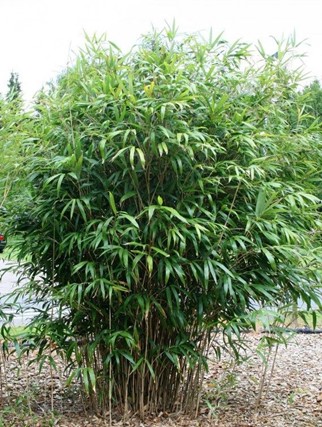BAMBUK

Pseudosasa japonica, is a species of flowering plant in the grass family Poaceae, native to Japan and Korea. This vigorous bamboo forms thickets up to 6 m tall with shiny leaves up to 25 cm long. The culms are typically yellow-brown and it has palm-like leaves. The common name "arrow bamboo" results from the Japanese Samurai using its hard and stiff canes for their arrows. It grows up to 4 сm a day. This cold hardy bamboo species (tolerant to 0 F/−17.7 C) grows well both in shade and full sun. Pseudosasa japonica does very well in containers and salty air near the ocean. Because it tends to be more shade tolerant than other bamboo species it is often used by gardeners as an understory to a tree-lined living fence.
Introduced to the Botanical Garden. The seeds of this species were brought from Yalta and sown in the Botanical Garden by academician F.N. Rusanov on 07.22.1950. In 1950, the introduction of these species was sown in the nursery in the spring and studied, and in 1964 they were planted in the East Asian exposition.




